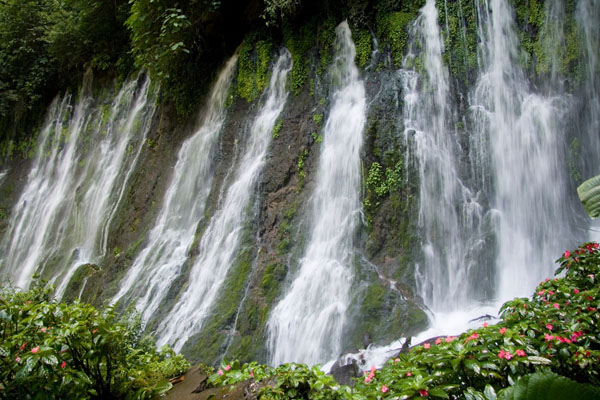Clouds over a volcanic mountain in Costa Rica
While Central America is part of the global transition to renewable energy, with the region a leader in hydropower and geothermal energy and most countries developing wind power projects, a new report from the Worldwatch Institute argues that the sub-continent is still not harvesting enough of its vast renewable energy resources.
The Way Forward for Renewable Energy in Central America is a new roadmap that the Worldwatch Institute, the environmental research organisation based in Washington, DC, and INCAE Business School have put forward for the region.
Central America comprises seven countries: Guatemala, Nicaragua, Belize, El Salvador, Costa Rica, Honduras and Panama.
As the economies of the these countries expands, regional use of fossil fuels is growing quickly, while the use of wood for cooking remains unsustainably high, according to the institute.
“Central America is at a crossroads,” said Alexander Ochs, director of Climate and Energy at Worldwatch and a co-author of the study.
He said that increased regional use of fossil fuels is triggering significant health, societal and economic costs, including rising greenhouse gas emissions and worsening air and water pollution.

Juayua waterfalls in El Salvador. Image via Shutterstock
Scope for 100pc clean electricity
“Central America has the potential to meet 100pc of its electricity needs with sustainable renewable energy, but the proper policies and measures need to be put in place now,” argued Ochs.
The Worldwatch report assesses the status of renewable energy technologies in Central America, as well as looking to how to advance these technologies in the future.
It has also identified knowledge gaps and finance and policy barriers, and makes suggestions for how to overcome such obstacles.
“Central American countries have issued ambitious policy statements that express political will for the further advancement of renewables, and some of them have made significant progress,” said study co-author Ana María Majano, associate director of INCAE Business School’s Latin American Center for Competitiveness and Sustainable Development.
She said, however, there is much room for improvement for the region to harvest its full renewable energy potential.
“In many cases, countries lack binding long-term goals and a coherent development strategy to reach them,” explained Majano.
Renewable technologies
The Way Forward report puts forward four areas that Central American countries could focus on to transit their energy systems.
These suggestions include expanding access to sustainable energy in underserved communities through distributed renewable energy.
Across Central America, an estimated 7m people have limited or no access to electricity services.
Because many live in remote areas far from electricity grids, the report argues that is unlikely that centralised power systems will ever reach them.
The report also argues for slowing the region’s rising fossil fuel use for centralised power generation.
Despite the region’s new investments in large-scale, grid-tied renewables such as geothermal, biomass, wind and solar, many Central American countries have plans to increase imports of oil, coal and natural gas, according to Worldwatch.
“What is evident from our research is that the region pays an enormous socioeconomic price for its reliance on fuel wood and imported fossil fuels,” said Adam Dolezal, Worldwatch’s Central America project manager. He said that the competitive advantage of pursuing clean-energy solutions becomes even clearer because of this.
Other recommendations from Worldwatch include tackling the use of wood for cooking and transiting to renewable-energy technologies. The report claims that biomass, particularly wood, accounts for more than a third of the region’s energy consumption.
Finally, the report looks to how Central American countries can challenge the region’s rising energy use for transportation.
Costa Rica mountain image via Shutterstock